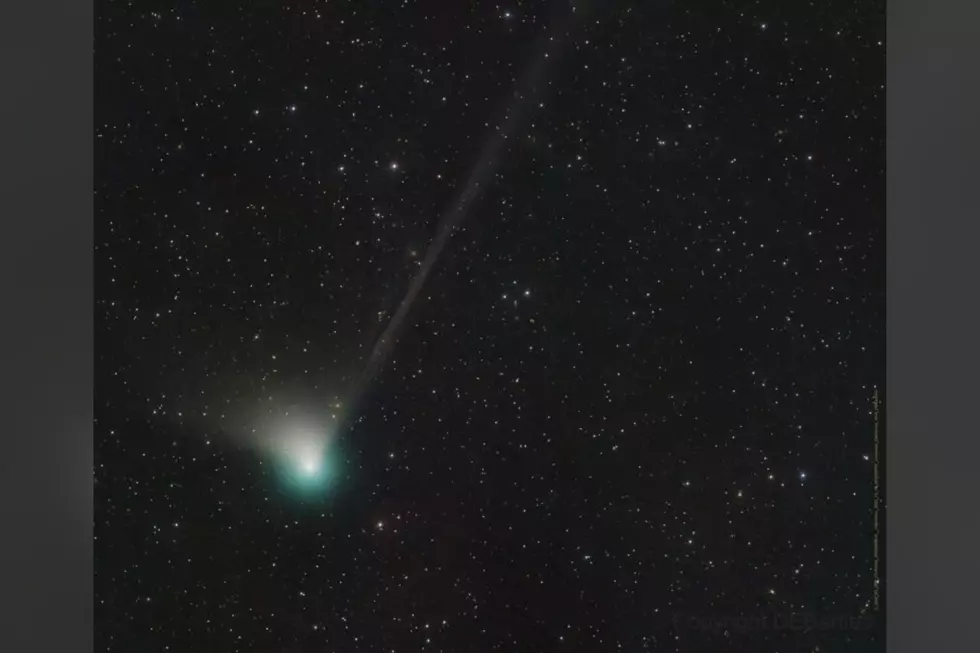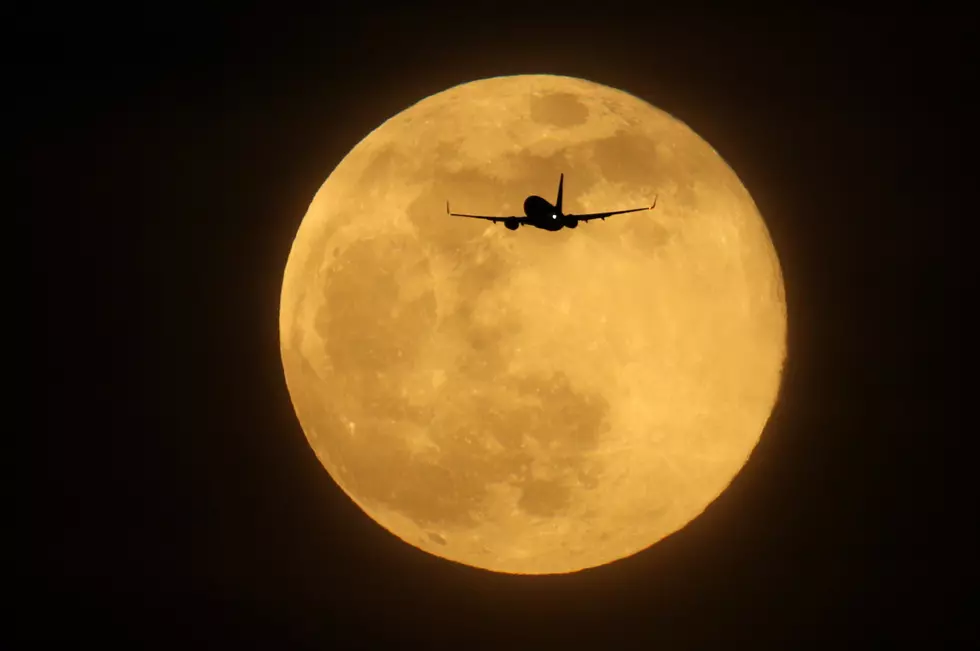
It’s A Triple-Shot of Celestial Excitement
It may be a bit chilly on Friday, but if you're into astronomy, it'll be worth bundling up for!
Three major celestial events are taking place all in one night - a Snow Moon, a lunar eclipse, and a comet! Here's a quick guide explaining all three and how you can see them.
SNOW MOON
How to see it: The Snow Moon is will rise at 5:18pm on Friday, and be visible until 7:13am on Saturday when it sets. If you miss it, don't worry! You can see it again on Saturday February 11th when it rises again at 6.23pm.
What to know: This full moon is nicknamed the 'Snow Moon' because it can be seen every year in North America during February.
LUNAR ECLIPSE
How to see it: The eclipse will begin at 5:34pm Friday night, peaking at 7:43pm, before ending at 9:53pm.
What to know: This will be a rare penumbral eclipse, where the moon, Earth and sun completely align. The Earth completely blocks the sun's light, completely immersing the moon in darkness for a brief period.
NEW YEAR COMET
How to see it: You'll need to stay up late and prepare for the cold (or have a convenient viewing window in your home) for this. The comet should be visible to the naked eye at the end of the week and into the weekend. Binoculars or a telescope are obviously needed for a closer look, but you should be able to spot the streak of light without them.
What to know: This passes Earth every 5.25 years. Discovered in 1948, its original name is Comet 45P/Honda-Mrkos-Pajdušáková but it was recently given the nickname 'New Year Comet'. It will be brushing past our planet from about 7.7million miles away.
More from 105.7 the Hawk:
More From 105.7 The Hawk









